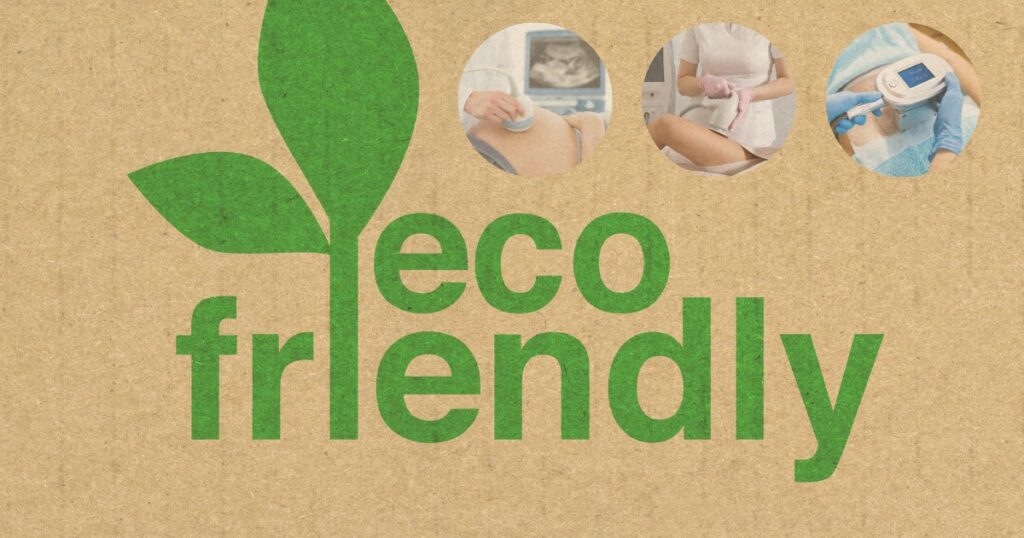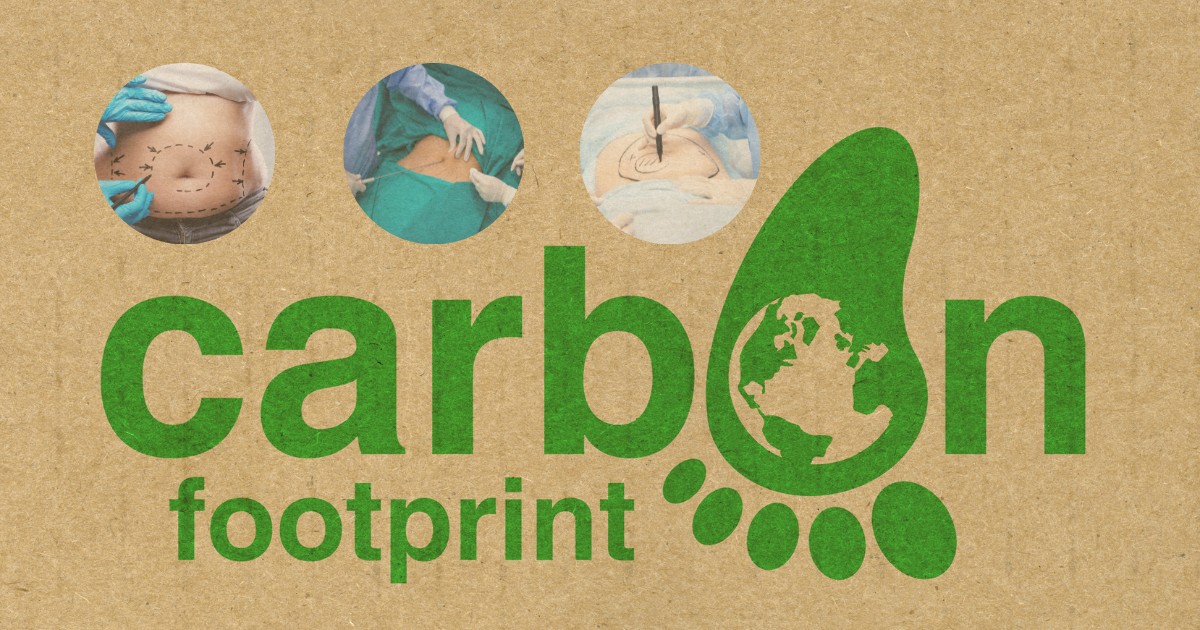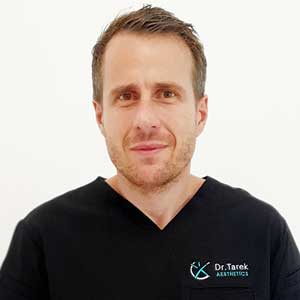The Environmental Impact of Liposuction has become an essential topic in medical discourse. As the world becomes more conscious of sustainability, understanding the ecological consequences of popular medical procedures, like liposuction, is paramount.
Environmental Impact of Liposuction How Much Waste is Produced During the Procedure?
Liposuction procedures produce varied amounts of medical waste, including used cannulas, syringes, gauze, and disposable drapes. The exact amount depends on the extent of the process and the techniques used.
- Medical Waste: Most clinics generate biomedical waste, such as used syringes, which must be disposed of properly.
- Single-use Items: Disposable items, often plastic, contribute significantly to the waste.
- Packaging: The materials that enclose sterilised equipment add to the waste.
- Surgical Drapes and Covers : Often discarded after one use, adding to the non-recyclable waste.
- Gloves and Protective Gear: Essential for maintaining sterile conditions, they’re typically used once.
- Waste Management : Proper waste disposal is crucial to minimise environmental impact.
- Waste Reduction: Some clinics are working towards reducing waste by choosing reusable instruments.
What is the carbon footprint of a single liposuction surgery?
The carbon footprint of liposuction includes the energy used by surgical equipment, lighting, and HVAC systems in the operating room, as well as waste disposal processes.
| Component | Description | Carbon Impact |
| Energy Consumption | Power for surgical machines/room | High |
| Transportation | Movement of equipment/supplies | Moderate |
| Waste Disposal | Getting rid of medical waste | Varies |
| Materials Production | Making surgical materials | Moderate |
| Equipment Manufacturing | Creation of surgical instruments | Moderate |
| Operational Output | General clinic operations | Low |
This table breaks down the various elements that contribute to the carbon footprint of a liposuction procedure, highlighting their relative impact.
Book A Consultation With Dr Tarek Bayazid
Top-rated Plastic Surgeon For Liposuction in Dubai
How do anaesthesia and other medications used in liposuction impact the environment?
A number of anaesthetic gases used in surgeries, such as liposuction, have been shown to be potent greenhouse gases when released into the atmosphere.
- Gas Emissions: Some anaesthetic agents contribute to global warming.
- Medication Production : The pharmaceutical industry’s carbon footprint impacts the environment.
- Disposal : Improper disposal of unused drugs can contaminate water supplies.
- Packaging : Medication packaging can add to non-biodegradable waste.
- Supply Chain : The transportation of medications contributes to greenhouse gas emissions.
- Usage Reduction : Minimised use of certain gases can reduce environmental harm.
- Alternatives : Research is ongoing into environmentally friendly anaesthetics.
What environmental impacts arise from disposing of liposuction fat?
Liposuctioned fat , considered medical waste, requires proper disposal, often involving incineration, potentially releasing greenhouse gases and other pollutants.
- Incineration : Burning medical waste, including fat, can produce pollutants.
- Landfills : If not incinerated, medical waste may end up in landfills.
- Greenhouse Gases: The disposal process may release CO2 and other harmful gases.
- Biohazardous Waste : Liposuctioned fat is categorised as hazardous, requiring unique disposal methods.
- Recycling Fat : Some procedures use liposuctioned fat for other medical applications.
- Innovation : Research is ongoing to find sustainable disposal methods.
- Waste Minimization : Techniques that use or repurpose removed fat can reduce environmental impact.
Are there eco-friendly alternatives to traditional liposuction?

Non-invasive fat reduction techniques, such as cryolipolysis and ultrasound, offer alternatives to traditional liposuction and may have a smaller environmental footprint.
- Cryolipolysis : A technique that freezes fat cells, reducing the need for surgical intervention.
- Ultrasound: Uses sound waves to break down fat without invasive surgery.
- Laser Fat Removal: A non-invasive method using laser energy.
- Reduced Waste : Non-surgical methods may produce less medical waste.
- Lower Energy Consumption: Fewer energy-intensive machines might be required.
- No Anesthesia : Many non-invasive techniques don’t require anaesthesia, reducing greenhouse gas emissions.
- Natural Metabolism: Some methods allow the body to process and eliminate fat naturally.
How does the energy consumption of liposuction machines affect the environment?
Liposuction machines, especially power-assisted devices, consume electricity, contributing to the carbon footprint of the procedure, depending on the energy source.
- Electricity Usage: Power-assisted liposuction devices use electricity during operations.
- Energy Source : The environmental impact varies based on whether the electricity is renewable.
- Operational Time : Longer surgeries require more energy.
- Energy Efficiency : Newer machines are often more energy-efficient than older models.
- Carbon Footprint : Energy consumption directly influences the procedure’s carbon impact.
- Alternative Energy : Clinics using renewable energy sources can reduce their environmental footprint.
- Energy-saving Practices : Clinics can adopt practices to minimise energy waste during procedures.
What measures are clinics taking to reduce the environmental impact of liposuction?
Many clinics are adopting sustainable practices, such as using energy-efficient equipment, recycling where possible, and minimising waste.
| Initiative | Description | Environmental Impact Reduction |
| Green Certification | Clinics adhering to environmental standards | Verification of green practices |
| Waste Management Systems | Implementing efficient waste disposal | Reduces pollution & contamination |
| Energy-efficient Equipment | Adoption of newer, low-energy machines | Reduced carbon emissions |
| Sustainable Supplies | Use of biodegradable or recyclable materials | Decreases waste generation |
| Water Conservation Measures | Implementation of water-saving technologies | Preservation of water resources |
| Green Education Programs | Educating staff & patients on sustainability | Promotes environment-friendly behaviours |
This table showcases clinics’ steps to be more environmentally conscious during liposuction procedures.
Are there recyclable materials used during a liposuction procedure?
While many materials are single-use and non-recyclable due to sterilisation requirements, some clinics are exploring recyclable or reusable alternatives.
| Material Type | Description | Recycling Potential |
| Plastic Instruments | Tools that can be sterilised and reused | High |
| Packaging | The material used to contain sterile items | Moderate |
| Disposable Drapes | Used for maintaining sterility | Low |
| Metal Instruments | Surgical tools made of metals | High |
| Medical Waste Containers | Bins and bags for medical waste | Low |
| Surgical Linens | Reusable cloth items | High |
The table elaborates on the recyclable materials utilised during a liposuction procedure and their potential for recycling.
How does the water usage during liposuction procedures compare to other surgeries?
Liposuction may use less water than extensive surgeries, but sterilisation and cleaning can still consume significant amounts.
| Surgery Type | Water Usage Description | Relative Water Consumption |
| Liposuction | Sterilisation, cooling machines, patient care | Moderate |
| Open-heart Surgery | Sterilisation, patient care, equipment cooling | High |
| Appendectomy | Sterilisation, patient care | Low |
| Caesarean Section | Sterilisation, patient care, washing | Moderate |
| Knee Replacement | Sterilisation, equipment cooling, patient care | Moderate |
| Dental Procedures | Sterilisation, patient care, equipment cleaning | Low |
This table compares water usage during a liposuction procedure with other surgeries, providing a perspective on relative consumption.
Do liposuction clinics typically follow green or sustainable practices?

While not universal, there is a growing trend among liposuction clinics to adopt green practices in response to environmental concerns.
- Green Certification : Some clinics seek certifications for their sustainable practices.
- Waste Management: Proper disposal and recycling reduce environmental impact.
- Energy Efficiency : Many clinics are transitioning to energy-saving equipment.
- Eco-friendly Supplies : Clinics are increasingly sourcing sustainable products.
- Water Conservation: Water-saving technologies are being adopted.
- Patient Engagement: Clinics are educating patients about their green initiatives.
- Staff Training: Sustainable practices often require training and awareness among staff.
Are there any environmental benefits to choosing non-surgical fat reduction methods?
Non-surgical overweight reduction methods often have a lower environmental impact due to reduced waste, no need for anaesthesia, and less energy consumption.
| Benefit Type | Description | Relative Environmental Impact |
| Lower Medical Waste | Fewer disposables used | Positive impact |
| Reduced Energy Consumption | Lesser power requirement compared to surgical methods | Positive impact |
| No Anaesthesia | Eliminates greenhouse gas emissions from anaesthetics | Positive impact |
| Faster Recovery | Minimal post-procedure resources required | Neutral to positive impact |
| Less Resource Intensive | Fewer surgical materials are needed | Positive impact |
| Natural Elimination Process | The body disposes of fat without external intervention | Neutral impact |
This table enumerates the environmental benefits that can be accrued from opting for non-surgical fat reduction techniques. Cellulite removal “Thigh Liposuction: Cellulite Eliminator?” is a procedure where doctors remove fat from your thighs to reduce cellulite. It’s like vacuuming out the lumpy fat to make your skin smoother. Liposuction Fat Disposition is a process where doctors use special tools to remove extra fat from certain parts of your body. It’s like vacuuming out the unwanted fat to help you look slimmer.
What role do single-use plastics play in the environmental footprint of liposuction?
Single-use plastics, common in medical settings for sterility, contribute significantly to the environmental footprint due to their non-biodegradable nature.
- Plastic Waste : Single-use items create a substantial amount of waste post-procedure.
- Non-biodegradable: Plastics can persist in the environment for centuries.
- Sterility vs. Sustainability: The medical field balances patient safety and environmental impact.
- Recyclable Alternatives: Efforts are underway to find or develop recyclable medical plastics.
- Waste Management: Proper disposal can mitigate some environmental effects.
- Patient Awareness : Patients can drive demand for greener alternatives.
- Industry Change : As concerns grow, manufacturers are researching sustainable solutions.
The Environmental Impact of Liposuction should be noticed in our journey toward a greener planet. As technology evolves and sustainable practices become more prevalent, it is hopeful that the footprint of such medical procedures will continue to decrease, aligning with global environmental aspirations.
Dr Tarek Bayazid , a leading plastic surgeon in Dubai, specialises in facial rejuvenation and body contouring. Known for his innovative techniques, Dr Tarek combines expertise with an artistic touch, ensuring natural results and utmost patient safety.
Interested in a transformative aesthetic experience? Book a consultation with Dr Tarek Bayazid today.








Related Posts